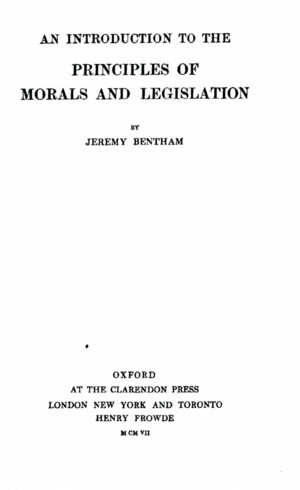
An Introduction to the Principles of Morals and Legislation
- Jeremy Bentham (author)
One of Bentham’s most important works in which he develops his theory of ‘utility’ at considerable length and discusses how the penal system (especially punishments) could be based on this theory. One of the founding texts of the 19th century school of Utilitarianism.
Another copy of this book can be found in HTML format at our sister website Econlib.